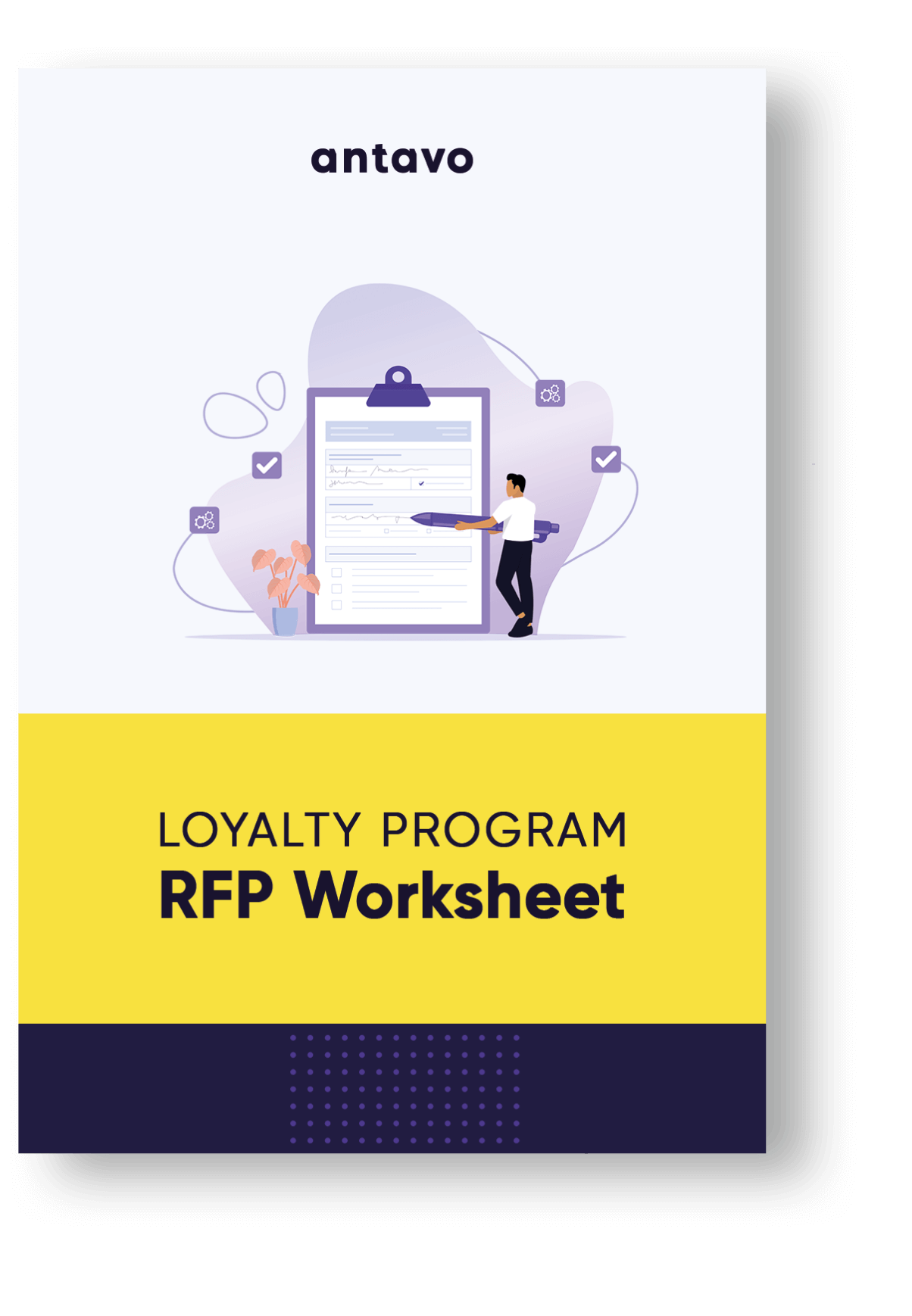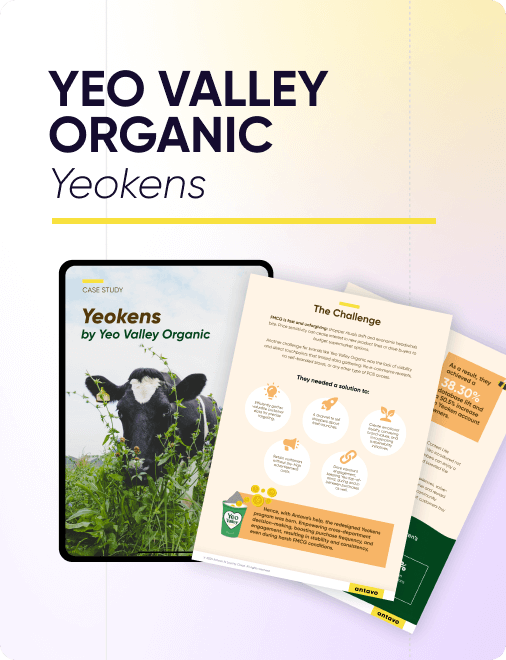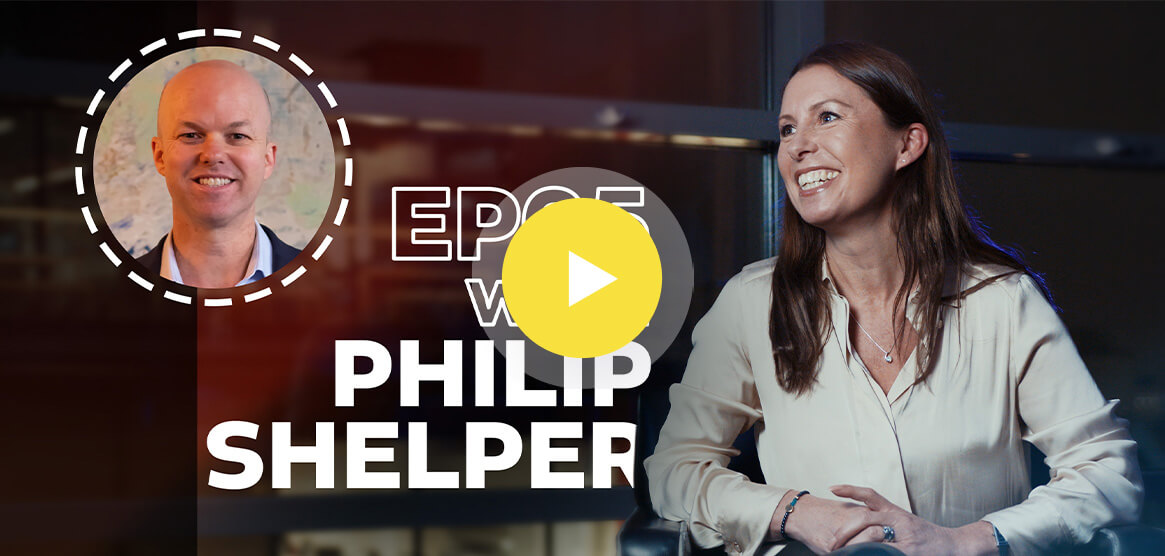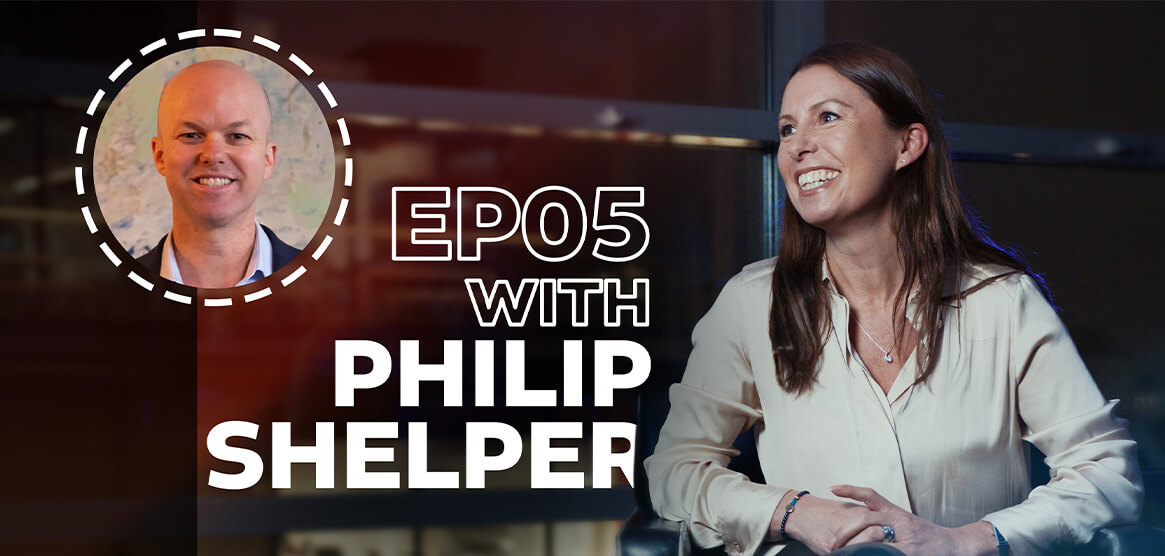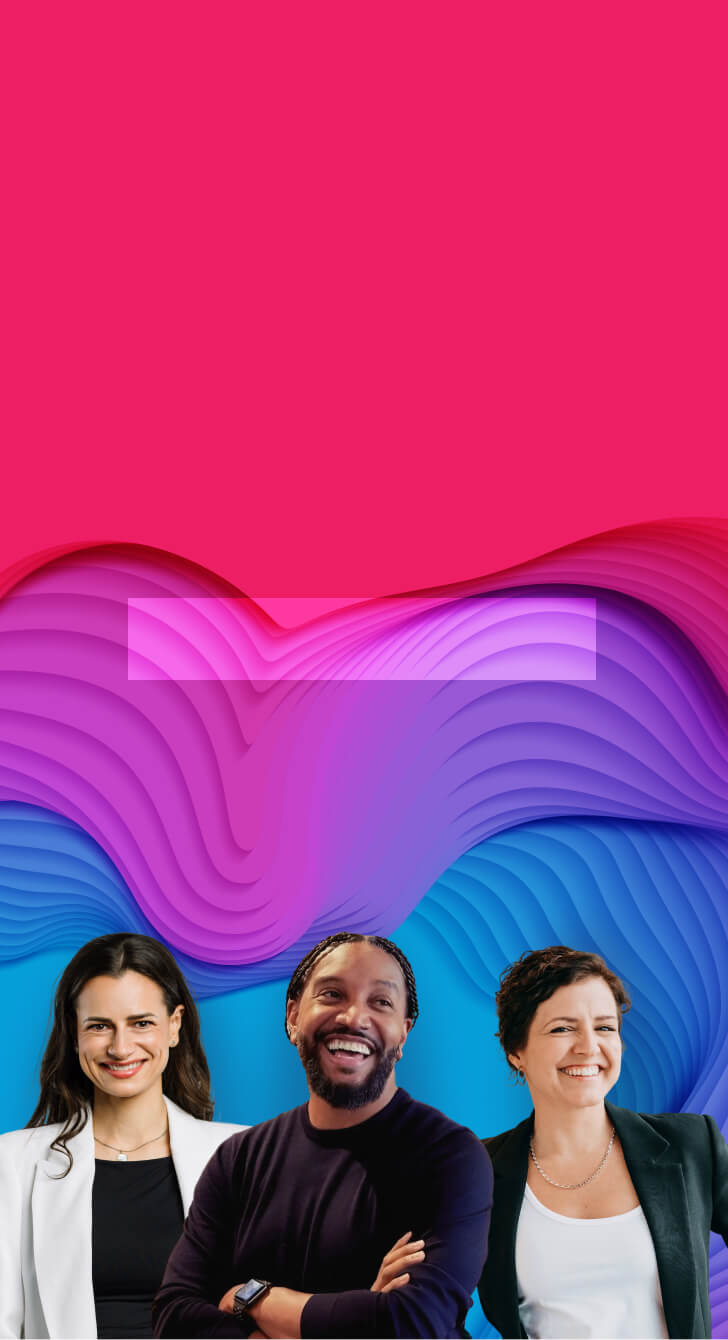In the fifth episode of our Loyalty Stories podcast, we welcome Philip Shelper, CEO of Loyalty & Reward Co.
The interview for this podcast has been a valuable source for Antavo’s Global Customer Loyalty Report 2024. Make sure to download it for over 30 statistics on loyalty program trends.
In today’s episode, we discuss whether or not Philip has a favorite loyalty program (spoiler alert: he doesn’t), and what he’s looking for when it comes to good loyalty programs. We explore the relationship between emotional loyalty and sports clubs and go into detail about the four main trends for the future. We also take a look at the optimal testing period and which analytic models help correctly demonstrate ROI.
Highlights from our conversation with Philip:
- Why efficiency matters so much in reward allocation
- The relationship between loyalty and community
- The four most important trends for the future
- The role and effect of AI and Privacy Regulations
Learn more:
- LinkedIn profile of Philip Shelper
- Loyalty & Reward Co website
- Loyalty Programs: The Complete Guide (2nd Edition)
- Read Philip’s thoughts on subscription programs
- Book a demo with Antavo’s loyalty experts
Michelle
Hi, welcome to Loyalty Stories. I’m Michelle Ellicott-Taylor Global Head of Partnerships at Antavo. Antavo is a tech vendor and we’re powering many global loyalty programs, including for brands such as KFC, BMW, and many fashion brands across the globe.
In our Loyalty Stories Podcast, we dive into trends and we get to speak with key partners about their insights for the upcoming trends across the next year. So today, I’m really pleased to introduce you to Philip Shelper, who is CEO of Loyalty & Reward Company. They’re an award-winning agency working on designing loyalty programs for the world’s best brands. So, Phil, thank you for joining us. I just wondered if you’d like to give yourself a bit of an introduction.
Philip
So as you mentioned, I’m CEO of Loyalty & Reward Co. We’re based in Sydney, but we’ve got offices opening up all around the world. Our first office will be opening in New York next week, which is really exciting. And we’ve got clients all around the world as well. Really great to be here. And of course, I’m the author of “Loyalty Programs, the Complete Guide” which is the bestselling book on Amazon.
Michelle
That is great, so it’s really nice to be able to promote that to so people please check that out. Excellent okay well thanks for that introduction and to get us started we like to ask that million-dollar question what is your favorite loyalty program and why?
Philip
Yeah, it’s interesting. Despite working in the loyalty industry, it’s been a while since someone’s asked me that question. I ask everyone I meet, but I actually don’t really have a favorite loyalty program. What I do do, I gravitate a lot towards programs that have efficient rewards. So that’s where it doesn’t cost the company very much to provide it, but the member values it highly. So an empty seat on a plane, a car that’s not gonna get rented, an empty hotel room a free movie ticket or popcorn.
Those are the types of programs that I generally frequent. I am flying to San Diego on Friday, so I’m looking forward to taking advantage of the Qantas First Class Lounge and priority boarding and some other treats as well. So I definitely love my loyalty programs, that’s for sure, but don’t necessarily have a favorite.
Michelle
Well it’s nice that everyone’s able to travel now and use all of those loyalty programs in the way they used to. So yeah, it’s interesting to hear how important those are to you.
Philip
Yep. Yeah, absolutely. So looking for value.
Michelle
Yes, yeah, that’s a key message here. So great, thanks for giving us that overview. Now I want to have a think about with the work that you’ve done, what is the work that you’re most proud of that your agency worked on? And if you can, you can say the name of the client or just give an example.
Philip
Sure. So in the 10 years that Loyalty & Reward Co has been running, we’ve consulted over 100 companies all around the world. But probably my favourite program that we’ve worked on is for Australian Venue Co. They’ve got over 200 bars and pubs across Australia and New Zealand. And we designed for them a Loyalty and Payments app. And it’s really, really cool. Members can download the app. It’s called The Pass and register a credit or a debit card.
And when they go to one of the Australian Venue Co. venues, they can sit at a table and scan a QR code. It’ll open up the app. They can then order food and drink through the app and pay with a registered card. That’ll be delivered to the table. They earn points for their transaction, which they can then redeem for vouchers to use on future orders.
They can also buy gift cards and send them to loved ones or redeem gift cards within the app and they can also nominate one of their local sports clubs to receive a percentage of what they spend as a rebate every three months as well.
So it’s very cool, it’s super user-friendly and sleek, and best of all, we just won three trophies for that program at The Loyalty & Engagement Awards in Singapore about four weeks ago. So we’re very proud of that one.
Michelle
Oh, that’s fantastic news. Congratulations. You continue your award-winning agency status. That’s great to hear.
Philip
Thanks.
Michelle
And also it’s good that you mention about the sporting side of things there and how that’s connected because there’s lots of companies talking about how they’re connected with sports clubs and how that wider loyalty program can work.
Philip
Yeah, absolutely. I think there’s a lot of people who are involved with local sports teams and there’s a real sense of community around that. So loyalty programs looking to plug into a community that is passionate and wanting to support and get involved can really benefit from engagement with those types of clubs.
Michelle
Yeah, that’s where there’s that huge emotional loyalty there where someone is so invested in a club and there’s a really strong tie to that so it’s not thinking about a simple, I guess, earn and burn program, it’s looking at that connection someone has to a club.
Philip
Yeah, absolutely. Yeah. So plugging into that can be very powerful.
Michelle
Yeah, excellent. Okay, so moving forward with looking at trends, what do you think over the next, I guess, couple of months and for next year, we’re going to see as the big changes in the loyalty industry?
Philip
Yeah, it’s a really good question. There’s lots and lots of trends that are going on in the industry. I think for me, the main things are personalization, obviously. So post-COVID, consumers are demanding more and more personalisation of their experience, their offers, their communications. And I think a lot of companies are really caught out by this. They don’t have the technology in place or the training and skill sets within their staff to be able to deliver to that.
So certainly from our perspective, companies that are doing that well and consistently have a distinct advantage over other companies. So we’ll see a lot of focus on that over the next five to 10 years. The second one, which is a bit more concerning is value erosion. So we’ve seen a lot of big programs over the last 12 months in particular actually reduce the amount of value that they’re providing to members.
I think it’s probably a bit of a combination of tougher economic conditions, companies looking for opportunities to cut costs, as well as the accountants taking over. For me, it’s a really bad sign of how things are. I think in the long term, companies will regret it because they will see a reduction in the effectiveness of their programs. But it’s certainly a trend, that’s for sure.
We spotted digital games as a trend several years ago, and we’re loving to see that continuing to roll out. There’s more and more companies experimenting with digital games as a way to drive engagement with their consumers. I was speaking to a promotional company in Amsterdam who runs a loyalty program for one of the big telcos over there.
And what they identified as part of the digital games that they provide for the telco is that customers who play a game and win an offer are much more likely to take up the offer than if they’re just provided with the offer. So I think winning an offer provides people with a sense that they’ve actually earned something or achieved it and therefore feel a stronger connection to it and perhaps more compelled to then take advantage of it because otherwise they’re not using the prize that they’ve won.
So I think there’s some absolutely fascinating psychology going on in there. And then the last one is subscriptions. So companies have been talking about subscriptions for some time, and there’s certainly been a bit of a boom in them. I think the next wave of subscriptions is going to be companies getting really, really smart about how they’re executing them.
I believe during COVID, there was a lot of easy money to be made. People are a lot wiser now about what they are and aren’t looking for in subscriptions. So I think we’re gonna see some really clever innovation and evolution of subscriptions, particularly within multi-programs. So we’re watching that space very carefully.
Michelle
Yeah, that’s really exciting to hear the types of trends that you’re seeing. And are you, like for instance with gamification, that’s coming up a lot in loyalty because of it being interactive and also people having that reward of winning something. Are you seeing gamification in any particular vertical or is that across the board?
Philip
Yeah, we’re seeing it quite a lot in quick-service restaurants. So classic example, of course, is KFC Arcade, the award-winning KFC program that’s run by Antavo. McDonald’s has done some really great stuff, Burger King, a lot of the American and UK fast food chains have done some really interesting things. High-end fashion brands have been doing a bit with it as well.
But we are starting to see it now expand out into other verticals, which is really interesting. The other great news is that there’s a lot of good quality white-label game platforms that enable companies to build a game fairly cheaply and test it before they roll it out more widely. So the technology has become a lot more accessible and cost effective. So we’re expecting that we will see a lot more experimentation by brands over the next few years.
Michelle
Great, okay. And then also with the trends we’re seeing around say ESG and sustainability and how brands are looking to work with that as a trend moving forward. So again, we mentioned earlier about standard point systems but what are you seeing with that in the marketplace?
Philip
Yeah, we’re certainly seeing it. I think it is moving from lip service and greenwashing to genuine commitment by companies to want to do something in this space and be able to demonstrate their credentials, but also show that they are delivering real results, which is very interesting.
There’s still very much within loyalty a case of providing members with the option to do something for others or the environment or do something for themselves. The vast majority of people will do something for themselves. But there’s some really good initiatives popping up that are very focused on ESG. There’s a great startup in Australia called Greener who are doing some really cool stuff.
And we’re working with a major EV brand at the moment, a major global EV brand to design something that will enable people to earn points for driving the car as a way to reduce emissions as well. So yeah, I think this space is going to get a lot of attention over the next few years.
Michelle
Yeah, definitely. It’s something that brands are looking at to, yeah, especially post-pandemic, you know, and with the economic climate in certain regions. It’s something that they’re definitely having as a consideration when building out their loyalty programs. Excellent. Okay. And just something to go back on something you mentioned there about I guess the buy-in for people with loyalty programs and looking at the types they’re wanting to invest in and the ROI.
Are you having, I guess, good conversations with brands around realistically what the measurement is on a loyalty program before they can start to see that ROI? Like, people wanting to test a program for three months isn’t really valid. What’s the length of period that really is going to give true results?
Philip
Yeah, absolutely. I think particularly in the last 18 months or so, and once again, it might be driven by tightening economic conditions, but we are certainly working with clients who are a lot more concerned about the return on investment of their loyalty program. What we would typically do is design the program and get and take that to market research and have it validated before we would start thinking about commercial modeling.
A lot of our clients now are wanting us to start the commercial modeling far earlier in the process so that as part of the designing it, we’re also validating with the commercial model before it goes any further. We’ve recently hired Ryan De Boer, who is as our CFO, who had spent 15 years at Qantas Frequent Flyer and a short time consulting.
So we’re designing really exceptional commercial models for our clients at the moment and they’re definitely responding very positively to that. We also have started doing cost-benefit analysis, high-level cost-benefit analysis summaries for prospects prior to them formally engaging us as well to give them a sense of what the upside potential would be. So it’s increasingly becoming an industry whereby the return on investment needs to be demonstrated before serious investment is taking place.
Michelle
Yeah, definitely. I think that’s it. That people are understanding. It’s not just a quick, oh, let’s put a point system in. And three months later, we’ve got all that data we need on the success of this. Something has got to run for a longer period to get that true result there. Great. Okay. Thank you very much for those updates and discussing the trends there. That’s really insightful.
I’m starting to think now about how you’re advising customers with regards to their selection on the vendor and the loyalty platform that they should be working with. So it’d be really good if you can give us some insight on how a loyalty program tech vendor can be helping these brands and what are the key features and capabilities that brands are looking for to support them with achieving their loyalty strategies.
Philip
Yeah, it’s a really good question, Michelle. So 10 years ago when I first started Loyalty & Reward Co, there wasn’t that many good quality loyalty platforms around and they were quite expensive. Most of the companies who are operating in this space were designing the program to fit within the constraints of what their loyalty platform could do. And as a result of that, the caliber of many loyalty programs was very substandard.
Simply because the ability to deliver something more refined and more innovative just wasn’t possible due to the technology. These days with platforms like Antavo, it’s really possible to do anything. So much to the stage where we don’t even really consider the technology when we’re designing a program these days. Most of what we say to our clients is don’t worry about the technology, no matter what we come up with.
Modern loyalty platform is going to be able to deliver to it. And that’s certainly the case. So the advances in the capabilities of loyalty platforms has really unleashed the potential for a huge amount of innovation in loyalty program design, enabling that to be supported and brought to life, which is a really great era to be in.
I think if I was at the stage that I am, 10 or 15 years ago, I would be nothing but very, very frustrated that I couldn’t have all of the wonderful programs that we dream up be brought to life. So it’s a fantastic era.
Michelle
Yeah, it’s really exciting. It feels like there’s a real focus on loyalty and people understanding about it. It’s not just growth with the business, it’s retention of your customers and treating them in the right way because they’ve been loyal to your brand.
Philip
Absolutely.
Michelle
Excellent, okay. So we’ve discussed some really exciting things here. Thank you very much. I wanted to obviously ask you if there’s anything else that you would like to add because being the expert that you are in this field, we could obviously talk a lot about so many things within loyalty but are there any other key areas that you would like to highlight?
Philip
Yeah, there’s probably two things that I think will be really relevant to the business, to the industry over the next couple of years. The first one, not surprisingly, is anything to do with AI. I think loyalty platform providers will either need to integrate with AI platforms or incorporate them into the platform as companies demand more and more of those types of capabilities.
And I think it really is going to unleash a new wave of loyalty innovation. It will certainly help with personalization and customization of experience, helping with segmentation models and better understanding data, even building up more complex and refined reward programs, improvements in customer service and digital experiences. So it’s very, very exciting. And I think multi-platforms have a really critical role to play in helping to make that mainstream and not just the remit of more, bigger, more lucrative coalition programs. So very excited to see what happens here as it continues to evolve and programs like ChatGPT make it more accessible.
The second thing is that I believe that, and we already have seen a lot of this during COVID, we’ll see more and more companies moving towards having a quality, robust, best practice loyalty program as a way to help them work their way through tightening privacy regulations, as well as the death of cookies and the rise of walled garden data. So on one side, you’ve got companies being pressured by the government and then on the other side, you’ve got companies being pressured by big tech.
So on the government side, making more and more stringent regulations in the way that data can be collected, used and monetized is means that a lot more restrictions and a lot more disclosures for companies. And loyalty programs is the perfect way to manage that. As part of the registration process, there’s clear disclosures.
People are needing to agree to terms and conditions and privacy policies. Companies are able to be upfront and honest with them about how that data will be used. And consumers can see a clear value equation between the data that they’re providing to them and the experience that they get back. So loyalty programs can really help companies in managing something which is going to become increasingly complex all around the world.
And then on the other side with Big Tech, banning cookies and then the rise of walled garden data plays by Google, Amazon, Apple and so on will make the digital marketing environment a lot more expensive because companies will be forced to use tools and have to pay for those tools.
So the companies that have been smart and have invested in a good quality loyalty program and build up engaged customer database are going to be much better positioned than those who haven’t, because they’ll be able to be much more conservative with their investment of their digital marketing spend, and also take better advantage of the tools by having a better opportunity to generate lookalike audiences and utilize the analytics capability of these tools as well.
So we’re looking very closely at all of that. It’s happening all around the world and it’s going to lead to quite significant shifts in everything to do with the loyalty industry. So very exciting, that’s for sure.
Michelle
Yeah, it’s a really exciting time for loyalty. And I think it’s great to get this insight from yourself and understand what’s coming up with the key trends. I was really interested to hear what you said about the gamification side of things. We see a lot of that with brands looking to move forward with that. And yeah, everything that’s been discussed today has been fantastic. So that’s a wrap. That’s where we’ve got to with our great interview today. So thank you so much, Phil.
I’ve really appreciated you taking the time to take part in this and I particularly enjoy hearing all of your input here but on the AI side of things that’s something we’ve seen too so it’s interesting that that’s a key topic that people are going to be considering for how that’s going to impact what they’re doing in their whole digital program strategy but obviously on the loyalty side as well.
Excellent, okay well thank you very much and please visit antavo.com to come and find out more about our loyalty platform and wherever you see this, whether you’re on LinkedIn, whether you’re on YouTube, please like us and we look forward to sharing the next episode with you.
Thank you.
